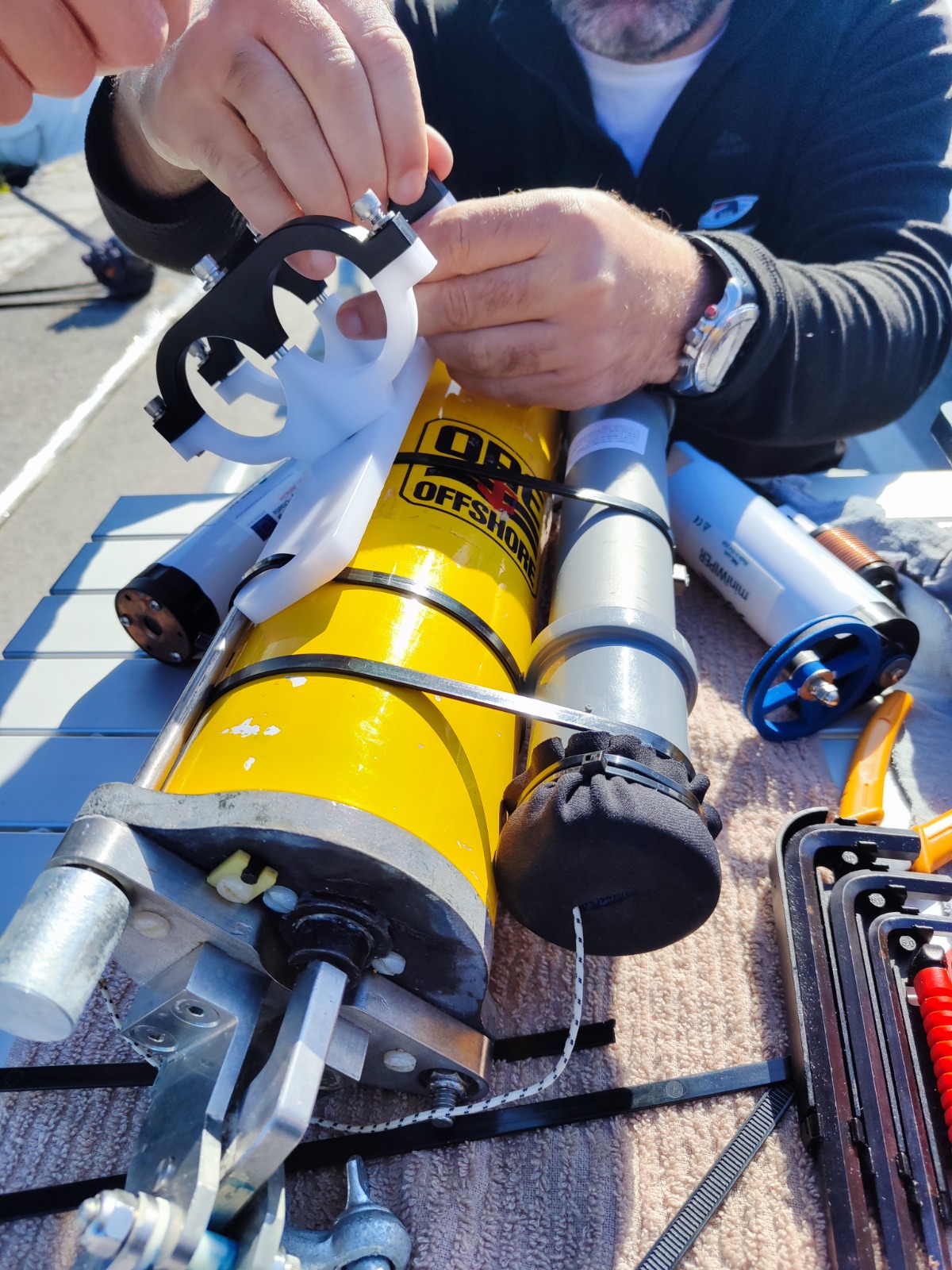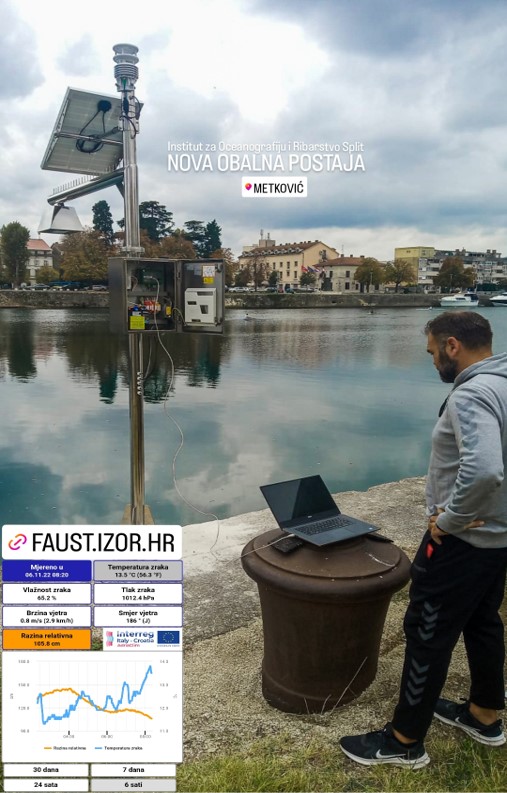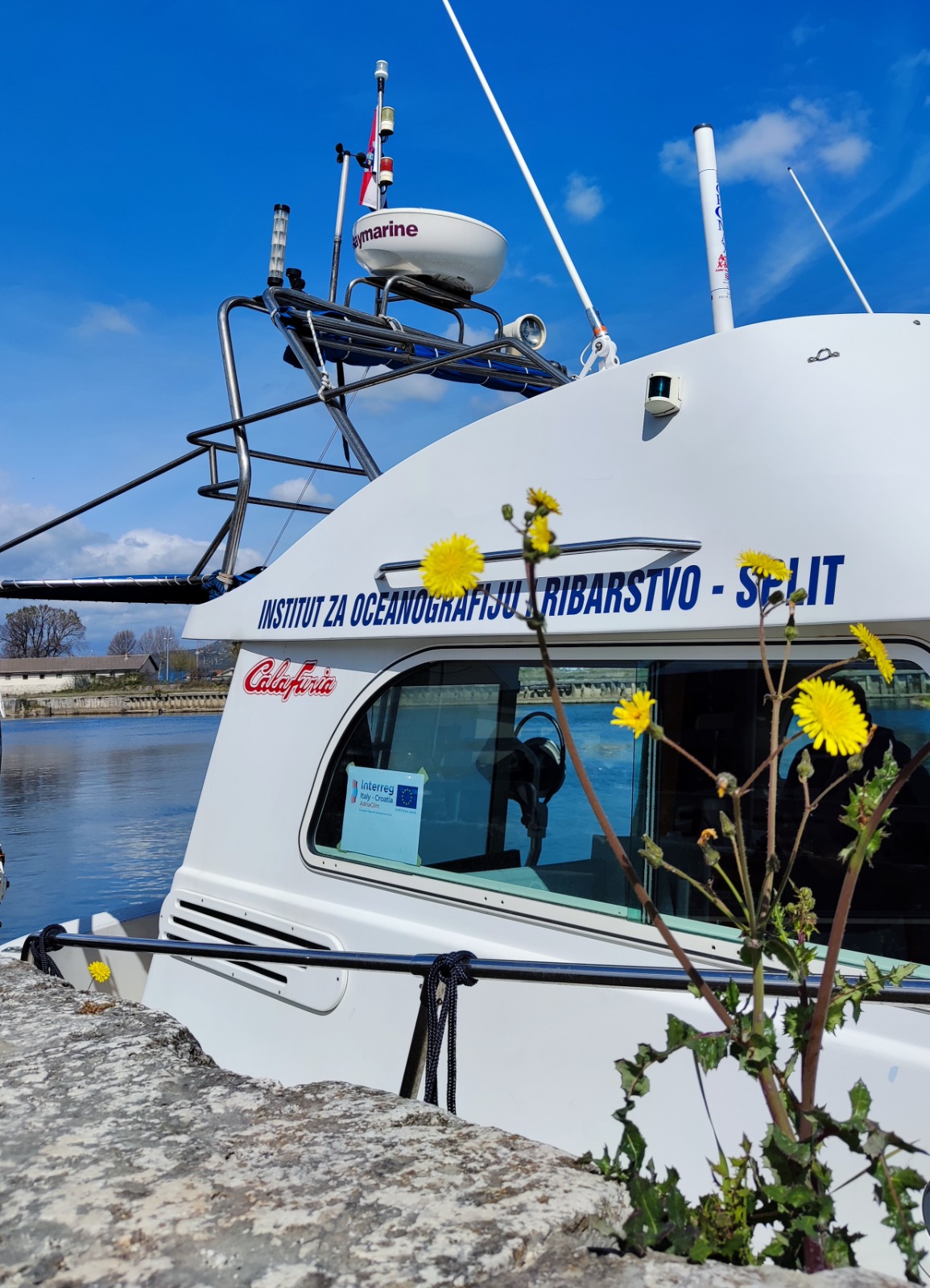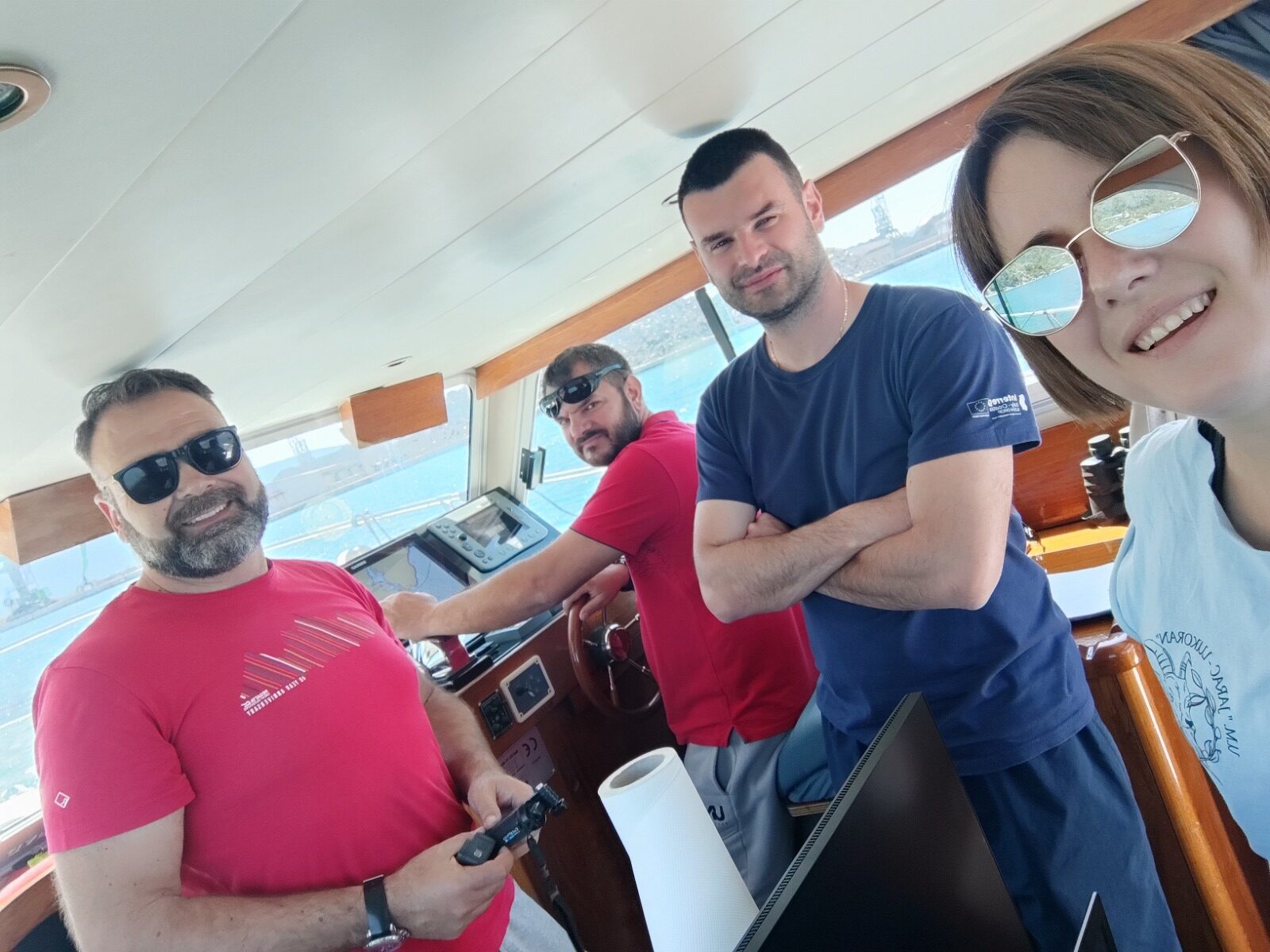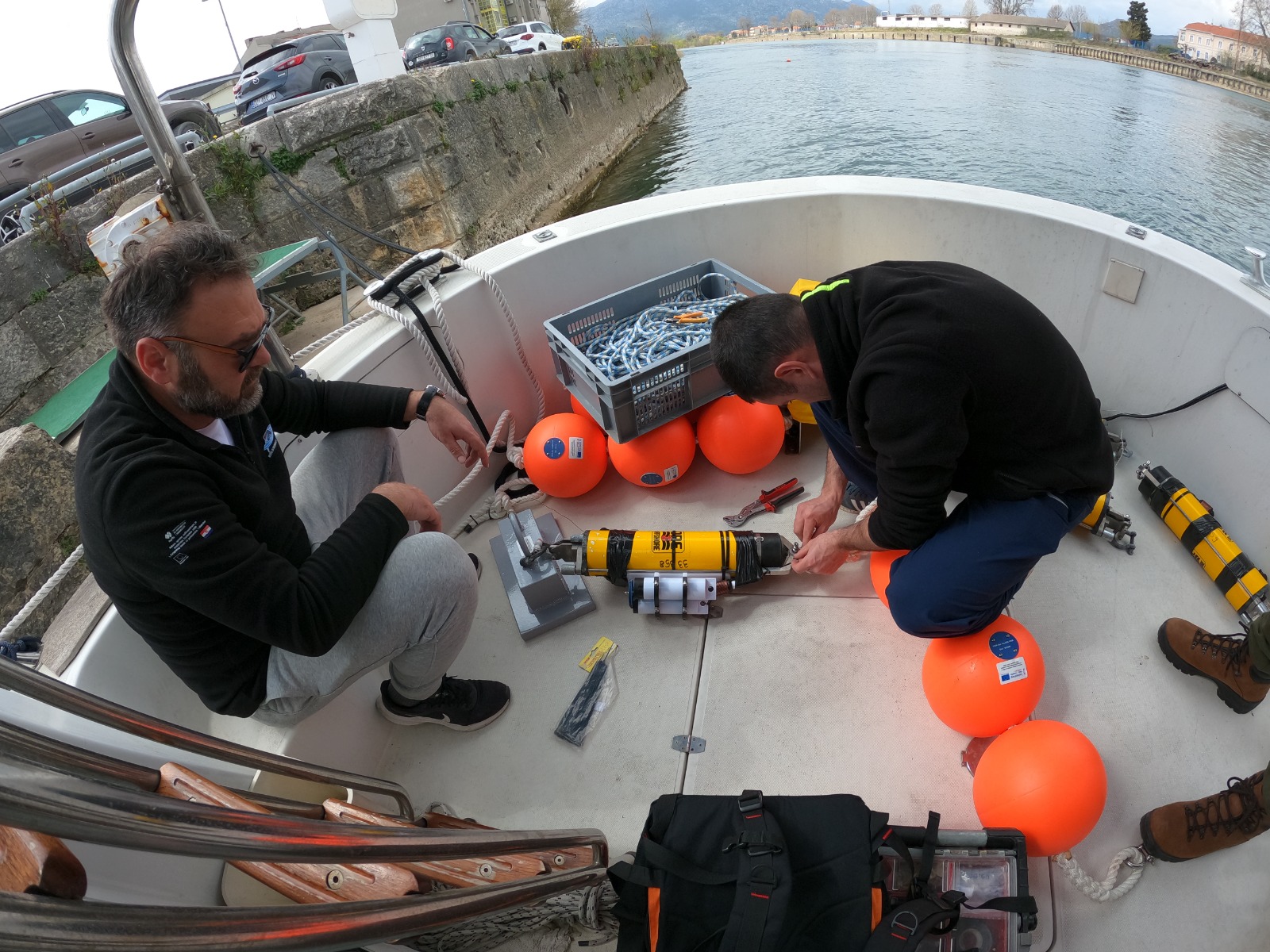The delta of the Neretva River is the largest estuary in Croatia and one of the most important agricultural areas. The delta is also a valuable ecosystem, home to numerous endemic species and is included in the Ramsar list as a wetland of international importance.
Saltwater intrusion into the Neretva riverbed has a negative impact on agricultural production, but also on the biodiversity and balance of this fragile ecosystem. Unfortunately, according to climate projections, the frequency of saltwater intrusion is expected to increase due to rising sea levels and the decrease in precipitation and river flow in summer. All this prompted the scientists of the Laboratory of physical oceanography to study the salinization of the Neretva estuary in more detail as part of the international project Interreg ITA-CRO AdriaClim.
At the end of March and beginning of May, the Laboratory of physical oceanography conducted field research on the Neretva River. For this purpose, autonomous sensors were placed at four locations for continuous monitoring of water temperature, salinity and dissolved oxygen content, and researchers measured both temperature and salinity on a series of vertical profiles along the Neretva riverbed, providing a detailed view of the sea wedge’s intrusion into the river in late March.
In early May, the high water level of the Neretva River due to a strong cyclonic disturbance, which brought heavy rainfall, “pushed out” the sea to its limit.
In addition to the autonomous sensors, an automatic meteorological-oceanographic station was installed in the Metković port, which monitors a number of environmental parameters in real time (http://faust.izor.hr/autodatapub/postaje?jezik=eng).
Since it is expected that seawater intrusion into the river will become deeper and more frequent due to climate change, the Laboratory of physical oceanography will continue to monitor changes of environmental parameters in the Neretva river, which may form the basis for the development of an early warning system.
